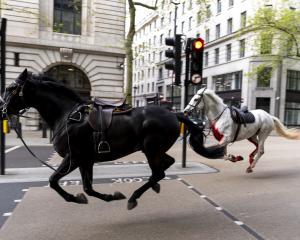
Along with the Big Wheel and the Game Boy video device, the Strong National Museum of Play in Rochester chose the ball on Thursday to join its all-star lineup of 41 classics, ranging from the bicycle and the kite to the jump rope, the teddy bear and Mr. Potato Head.
The muscular Big Wheel tricycle was launched at the 1969 Toy Fair in New York and Game Boy was an instant hit for Japan's Nintendo Co. in 1989.
Longevity is one key criterion for getting into the hall. Each toy must also foster learning, creativity or discovery through play.
Many judges on the hall's national advisory panel recognized the ball's inclusion was long overdue.
"Probably no other plaything is as easily recognised, easily played with and universally enjoyed by people of all cultures, skills and ages," said Nicolas Ricketts, a curator at Strong. "The ball is timeless, it will always be here. In the words of American golf great Tiger Woods, 'It will always be the ball and me.'"
A selection of 25 balls of all sizes and materials were put on display, from table tennis, golf, basketball, billiard, football and bowling balls to hyper-bouncing rubber balls, wind-steered beach balls, foam-like Nerfs and an old-style leather football ball.
Game Boy transformed the electronic games market by popularizing handheld gaming. It was the first portable system to allow multiple players simultaneously and came bundled with the classic puzzle game Tetris. Additional launch titles featured Nintendo's already iconic character, Mario.
The Big Wheel was created by Louis Marx & Co., the largest toy maker in the U.S. between the 1940s and 1960s, and remained its big seller for a decade. Chief designer Ray Lohr took apart a tricycle, mixed up the parts and reassembled them into an upside-down trike that handled like a race car.
Its design gave young children a sense of independence and control that tippy trikes couldn't deliver.
"Riding close to the ground heightened the sensation of speed and exaggerated every bump and blip in the pavement," said Patricia Hogan, the museum's curator of toys. "Kids who mastered peel-outs, high-speed 180s, doughnuts, skid-outs and screeching stops had the most fun. Who knew that getting around the neighborhood would be such a blast?"












